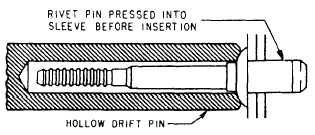Figure 13-54.—Inserting self-plugging rivet (mechanical lock).
Since no further shank expansion will result, the drill
hole should not be enlarged to provide a free fit of the
already expanded rivet. To insert the rivet, you
should use a hollow drift pin that will accommodate
the rivet pin and the locking collar. See figure 13-54.
This allows a driving force to be exerted on the head
of the rivet. Drive the head into firm contact with the
sheet, and then apply the rivet pull tool in the usual
manner to upset the rivet.
Because of the mechanical lock feature of the pin
and sleeve, the driven rivet is substantially the
mechanical equivalent of a one-piece solid rivet.
Inspection
Visual inspection of the seating of the pin in the
manufactured head is the most reliable means of
inspection. If the proper grip length has been used
and the locking collar and broken end of the pin are
approximately flush with the manufactured head, the
rivet has been properly upset and the lock formed.
Insufficient grip length is indicated by the pin
breaking below the surface of the manufactured head.
Excessive grip length is indicated by the pin breaking
off well above the manufactured head. In either case,
the locking collar might not be properly seated and an
unsatisfactory lock would be formed.
Removal
Removal of this rivet can be accomplished easily
and without damage to the work if you use the
following procedures. See figure 13-55.
1. Shear the lock by driving out the pin with a
tapered steel drift pin not over 3/32-inch diameter at
the small end. If you are working on thin material,
Figure 13-55.—Removing self-plugging rivets (mechanical lock).
13-35





